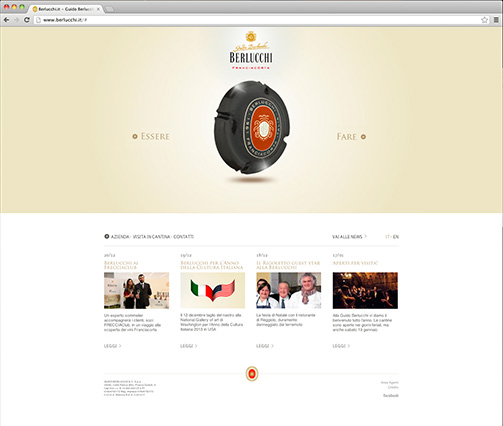Markets are conversations
Cluetrain Manifesto 1999.
The great change now underway is in the way buying behaviour is more and more influenced by the logic of reputation among consumers and peer pressure. Often companies remain outside these conversations. Even though they have the same means as the consumers, they don’t know how to use them, how to become part of the conversation.
The way many companies communicate seems inept, inadequate for managing the requirements to react and innovate quickly as demanded by the market. The new abilities required are agility, continuous redefinition, the importance of the service and the customer experience etc.. instead we see continuous efforts by companies to tell their own “story” but empathy is the key to accessing these conversations.

Let’s look back, for a moment, to 1492, the year that marked the passage from the medieval to the modern era. Christopher Columbus is the figure who best represents that historical moment.
An intriguing story, the discovery of America, as long as we don’t make the mistake of looking at it in a linear way: someone deciding to do a certain thing, planning the way to do it and reaching the objective. That’s not how it went!
The discovery of America was the chance outcome of a series of mistakes combined with an iron will to achieve an objective other than the objective actually attained: Christopher Columbus remained convinced until his death that he had shown the way to the East Indies and had not discovered a new continent. It took 20 years to correct this mistake. In order to realise that a new, unknown continent had been discovered, the people of western Europe had to change their beliefs and create new maps.
This occurs at times of great change: things are discovered that were not meant to be discovered. Today, as in 1492, we are experiencing a time of great upheaval. The new discoveries demand new maps in order to understand and communicate.
Chris Anderson says: “We are no longer what we say we are but what Google says we are.”
In this scenario, two great forces lie in opposition to each other, expressed by each one of us but little known: systemic empathy and stupidity.
The first is clearly a positive force, promoting the understanding of people, groups and communities who we don’t know but with whom we identify because they place us in a dia-logical dimension that has nothing to do with any sort of irrationality.
Stupidity is the more ancient, ancestral force, that of complacency, and it has great power. “Never underestimate the power of human stupidity” wrote Robert Heinlein, and he wasn’t the only one: Isaac Asimov wrote an entire, fascinating story “Even the gods are powerless against stupidity”; Flaubert was obsessed by stupidity and wanted to write an encyclopedia on “bêtise”. J.L. Borges also started to write a “Universal History of Ignominy” but stopped when he realised the vastness of the topic.
It’s part of human nature and can never be entirely eradicated.
The internet and the “systematically empathic” media have been transformed into breeding grounds of superficiality par excellence by the lack of models and lack of expertise.
The most common experience that can happen is to open a website and not find tools for interconnection, for sharing, for listening, for information, but “shop windows” that have become covered in dust over time that “scream out” messages like old-fashioned grinders that go unheard because they are of no interest to the user.
The internet is a “non-place”, a metamarket, it isn’t like the simple, physical non-places where people are encountered but ignore each other (typical examples: airports, motorways, railway stations), the internet is heard, instruments for listening are activated in order to converse and be heard. On the internet, the customer is “engaged” because it is efficient in exploiting and circulating information about companies and their products. The borderline concept in this “non-place” is a great green belt that is swarming with opportunities to be seized, and the consumer is readier to seize them than are businesses.
Systemic Empathy is never a casual event but a process to be activated through precise stages:
empathic listening, a careful analysis of the requirements and expectations;
the comparison, an honest assessment of what can be done and given:
the sharing of objectives, a strategic definition of the synergies to be activated.
This process gives rise to websites that are real platforms for global management of digital communication, tools for listening and positioning, real extensions of collaborative businesses that converse with the outside through constant flows of feedback fuelled by established values from strategic choices that include all forms of communication.
Tag Brand, Global design, Web site





